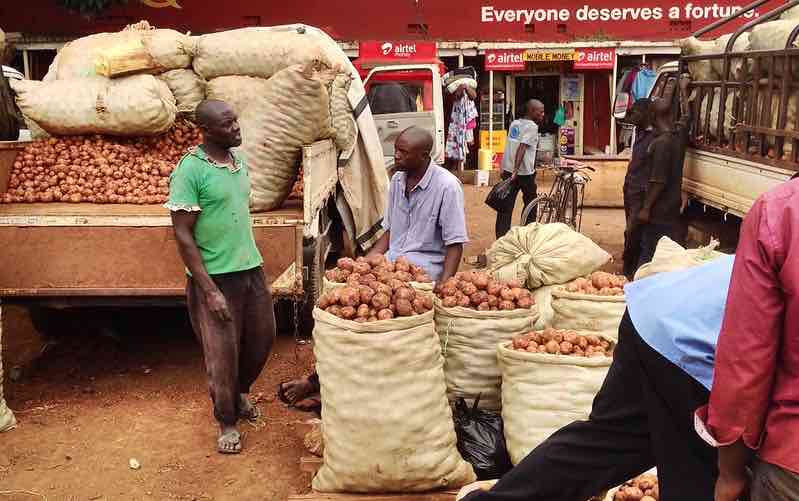IFPRI’s new COVID-19 Food Price Monitor tracks warning signs of stress in local markets
- From
-
Published on
05.05.20
- Impact Area

Food systems are complex and the disruptions caused by COVID-19 are varied. Global analyses of trends in food supply, trade, and prices are useful. However, as Manuel Hernandez, Soonho Kim, Brendan Rice, and Rob Vos emphasize, daily price data in multiple countries and markets are needed to provide information to identify and respond to more specific local and national shocks—and a new Food Price Tracker tool is now available to meet this demand.—John McDermott, series co-editor and Director, CGIAR Research Program on Agriculture for Nutrition and Health (A4NH).
Many fear that food supply disruptions caused by COVID-19 could lead to price spikes and erode people’s access to food in low- and middle-income countries. Price spikes can be early warning signals of tightness of food markets. Since the 2007-2008 food price crisis, IFPRI’s Food Security Portal has been monitoring global markets for staples including wheat, maize, rice, and soybeans. Prices in these markets are easy to monitor on a daily basis thanks to good data systems. Since the COVID-19 outbreak, these markets have remained relatively stable.
What matters to consumers, however, are the prices they face in the local markets where they buy their food. So, what is happening to the prices in those markets? The short answer is that we don’t really know. The problem is that price reporting systems are dispersed and often specific to individual food items. Consumer prices tend to be collected at relatively low frequency (monthly, quarterly) and published with considerable time lags. It is difficult to identify possible food supply chain hotspots from such sparse and dispersed price data.
Photo credit: Sven Hansen
This blog post is part of a special series of analyses on the impacts of the COVID-19 pandemic on national and global food and nutrition security, poverty, and development. The blog series is edited by IFPRI director general Johan Swinnen and A4NH director John McDermott. See the full series here.
Related news
-

ICRISAT to Deliver World-Class Services as CGIAR’s Breeding Resources South Asia Hub
International Crops Research Institute for the Semi-Arid Tropics (ICRISAT)07.07.25-
Biodiversity
-
Food security
Strategic collaboration to scale innovation and deliver harmonized, high-quality support across CGIA…
Read more -
-

Shaping policy changes for a sustainable cropping system in Uttar Pradesh, India
International Rice Research Institute (IRRI)03.07.25-
Food security
by Dr. Proloy Deb and Dr. Swatantra Dubey The Central Plain region of Uttar Pradesh…
Read more -
-

KOICA, UPLB, IRRI Partnership Establishes a Genomic Powerhouse to Future-Proof Agriculture
International Rice Research Institute (IRRI)01.07.25-
Food security
LOS BAÑOS, Philippines (26 June 2026) — KOICA, UPLB, and IRRI came together to showcase…
Read more -
